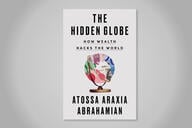You have /5 articles left.
Sign up for a free account or log in.
I saw a great presentation today (on the brain and learning) where the speaker made wonderful use of PowerPoint.
Some of the things the speaker did with his PowerPoint included:
- Seamlessly jumping across his deck in response to questions. For instance, if someone asked about long term vs. short term memory, the speaker was able to jump to a slide or set of slides with data, graphics, or text related to the question. He never said, "I'll get to that question in a little while." Instead, he reinforced the question (and the questioner) by adapting his presentation, and the slide(s) being shown, on the fly.
- The slides had no extraneous words or materials on them. No branding or institutional affiliation. No excess graphics, and and a minimum of text. We all know that when it comes to slides that less is more, but we forget that the templates we use often contain distracting information.
- When jumping to a slide to answer a question or respond to a point, the presenter showed a blank screen. We never had to look at extraneous slides or materials that did not relate to the current discussion or question.
- The presenter did not rush through slides towards the end of his talk to finish up on time. Rather, he was able to jump to his concluding slides at the point where the time for the talk was ending.
Good PowerPoint is so rare that I went up after the talk and asked him how he does it. Some of his answers surprised me.
His slide deck contains over 2,500 slides. Rather than editing slides or re-doing his talk each time, he simply adds new slides on to the end. It would seem that a 2,500 slide PowerPoint deck would be unwieldy, but the presenter showed me the outline he uses that has slide title and number. By typing slide number and hitting "return" PowerPoint jumps to the correct slide. As long as the outline groups the slides by category it becomes possible to find the correct slide and jump to it in response to the discussion.
I've never tried this methodology, but I think I might. If I basically had one big slide deck for each course, or each presentation topic, I'd get to know that deck very well. Slides could be added as I learned new things, rather than waiting to make the presentation or lecture prior to delivery. Building presentations could become part of the knowledge consolidation process, separated to the "performance" (lecture) piece, but ready to go when needed. Perhaps living with a slide deck over time would make it easier to give presentations in a non-linear manner, breaking down the barrier to communication that PowerPoint so often puts up.
Have any of you tried the giant slide deck, jump around, non-linear PowerPoint approach? Does this sound like a viable presentation technique, or did I just witness an idiosyncratic method that does not make sense to diffuse?




